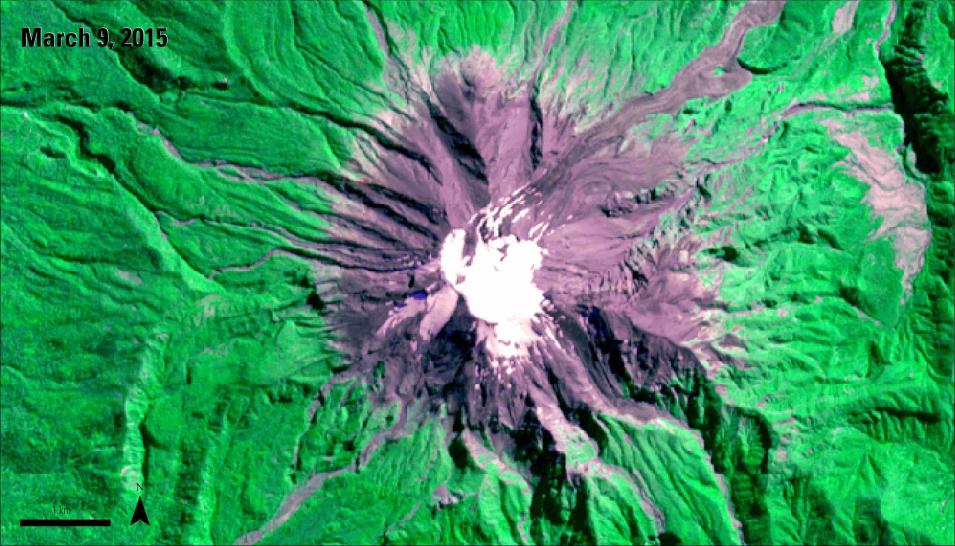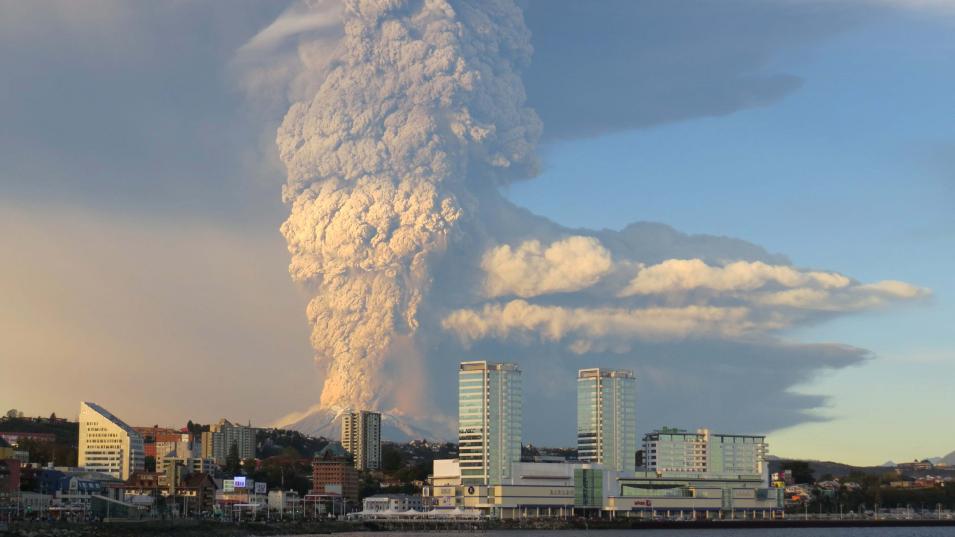Introduction
The Calbuco volcano, located in the Los Lagos region of Chile, is a stratovolcano that has a height of 2,003 meters (6,571 feet) above sea level, a base width of 16.5 kilometers (10.2 miles), and a 400- to 500-meter-wide (1,312.34-1,640.42 feet) crater. The Advanced Spaceborne Thermal Emission and Reflection Radiometer (ASTER) recently captured an image of the Calbuco volcano in early March 2015. ASTER imagery is often used to monitor and observe natural disasters due to its ability to capture an image of an area during a specific time period.
In April 2015, Calbuco experienced volcanic activity for the first time since 1972, and its most recent major eruption since 1961. On April 22, 2015, Chile’s National Service of Geology and Mining (Sernageomin) and its Volcano Observatory of the Southern Andes (OVDAS) changed Calbuco’s alert level status from the green “Normal” status to the red “Warning” status, indicating an eruption was imminent. This warning prompted an evacuation of nearby towns within a 20-kilometer (12.4 miles) radius of the volcano crater. Within 15 minutes of changing the warning status, the volcano erupted at 6:05 pm local time. The eruption lasted for 90 minutes and produced a plume of ash and smoke that reached more than 15 kilometers (9.3 miles) in height. Seven hours later during the early morning hours of April 23, 2015, Calbuco experienced an even larger eruption that lasted for six hours and produced another plume that reached a height of more than 15 vertical kilometers (9.3 miles). On April 30, 2015, the volcano erupted for a third time and generated a plume approximately four kilometers (2.4 miles) high.


